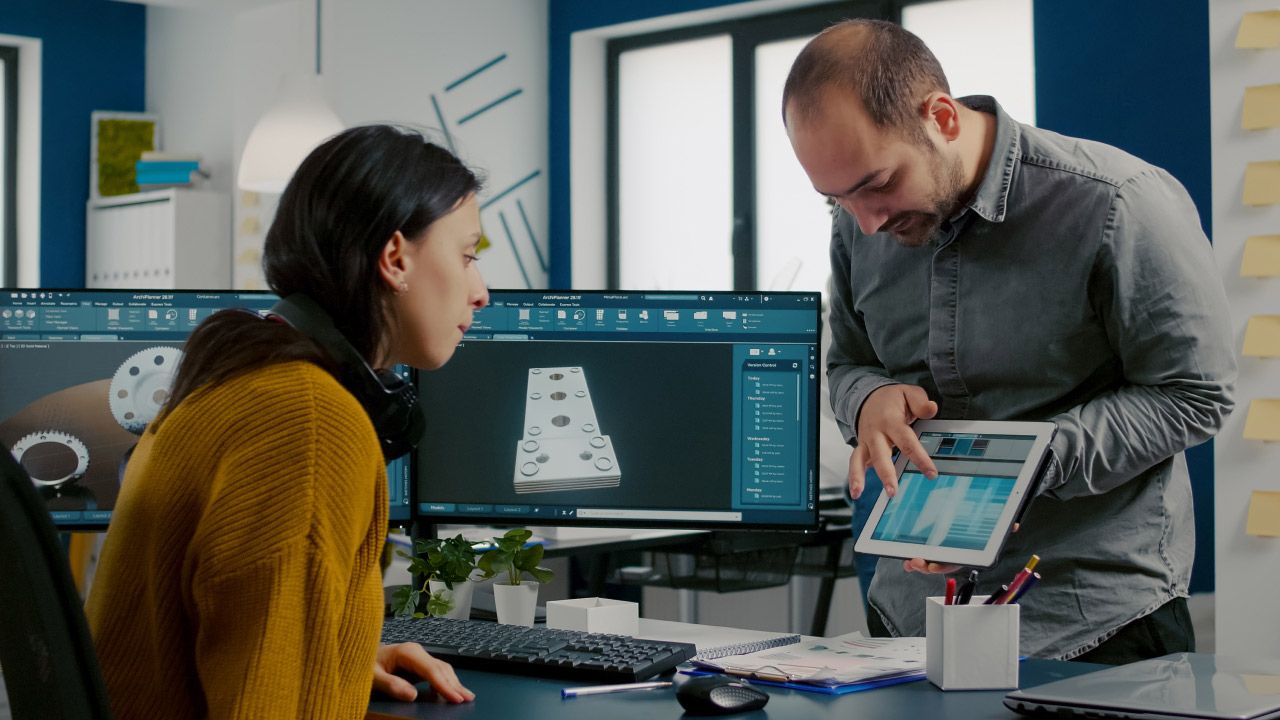The 7 Stages Of A New Product Development Life Cycle
By Marco Franzoni • May 12, 2024

The product development life cycle is a comprehensive framework that guides the journey of a product from conception to market release. It encompasses various phases, including ideation, design, development, testing, and deployment. This cycle is not just a pathway but also a strategic foundation for building and enhancing products that meet market demands and sustain competitive advantage.
Importance in Today's Business Environment
In today's rapidly changing business environment, understanding the product development life cycle is crucial. It allows companies to manage the complexities of creating innovative products while adapting to technological advancements and evolving consumer expectations. The life cycle's structured approach helps businesses mitigate risks, manage costs, and optimize the allocation of resources throughout the development process. By adhering to this cycle, businesses gain the agility needed to respond to market dynamics effectively, ensuring they not only survive but thrive in competitive markets.

Stage 1: Idea Generation (Ideation)
Identifying Market Needs
The first stage of the product development life cycle involves rigorous market research to identify unmet needs and emerging trends. This phase is crucial for uncovering market interest that guides the generation of viable product ideas. Companies analyze data from existing markets, potential customers, and competitive landscapes to ensure their new product addresses real demands and has a clear competitive advantage.
Brainstorming Sessions and Creative Thinking
During brainstorming sessions, teams utilize idea generation techniques to foster creative thinking and generate a plethora of new ideas. These sessions are essential for collaborative ideation, where diversity of thought and freedom of expression lead to innovative product ideas. Here, every suggestion is valued, and the collective creativity of the product development team turns initial concepts into potential product solutions.
Stage 2: Concept Development & Prototyping
From Idea to Concept
Transitioning from idea generation to concept development involves refining and defining the product's core features and value propositions. This phase transforms raw, unstructured ideas into actionable product concepts that are aligned with business goals and market needs. It's during this stage that a minimum viable product (MVP) begins to take shape, focusing on essential features that meet the target audience's primary requirements.
The Role of Prototyping in Concept Development
Prototyping plays a pivotal role in the concept development stage. By creating an initial prototype, teams can explore the look and functionality of a product without committing to full-scale production. This stage allows for iterative design where product concepts are visualized, tested, and refined based on practical feedback and technical evaluations. Prototyping helps in identifying potential issues early, saving time and resources, and enhancing the product's marketability by ensuring that it meets the expected functionality and design standards before launch.

Stage 3: Concept Testing
Testing the Concept with Target Audiences
Concept testing is a critical step in the product development life cycle, where the preliminary version of the product, often a minimum viable product (MVP), is exposed to a select target audience. This process helps validate the assumptions made during the concept development phase and assesses the product's potential for success. By engaging with potential customers, businesses can gather valuable insights and gauge market interest which are crucial for further refinement.
Analyzing Feedback and Iterations
Following concept testing, the development team meticulously analyzes customer feedback and user feedback. This stage is about interpreting the data collected and making decisions on whether to proceed, pivot, or pause. Feedback often leads to multiple iterations of the product concept, with each iteration refining and enhancing the product based on real user experiences and expectations. It's a dynamic process that ensures the final product is well-tuned to the needs and desires of its market, significantly boosting its chances of market acceptance and success.

Stage 4: Engineering Development & Testing
Technical Implementation
During the engineering development phase, the development team transitions the project from a conceptual prototype into a working model. This stage involves rigorous technical assessments and modifications to ensure the product development process adheres to the planned specifications and standards. The development phase focuses on integrating various components such as software, hardware, and raw materials, making it crucial for the development team to collaborate closely to overcome engineering challenges and align the product with its intended design.
Product Testing and Quality Assurance
Product testing is a systematic process to ensure that the product is safe, functional, and meets the established product development process criteria. This step involves various tests such as performance testing, durability testing, and usability testing, which are essential for maintaining quality assurance. The results from these tests help the development team identify areas that need refinement and ensure that the final product matches the expected functionality. This stage is critical to minimizing potential risks associated with product launch and maximizing product reliability and customer satisfaction.
Stage 5: Marketing Strategy
Developing a Market Entry Strategy
A robust marketing strategy is vital for introducing a new product to the market. This strategy should be formulated by marketing teams who understand the target market and the competitive landscape. Effective market entry strategies involve a combination of market analysis, positioning, and the identification of key differentiators that give the product a competitive advantage. The aim is to create a compelling value proposition that resonates with the target audience and establishes a solid foothold in the market from the outset.
Pricing, Promotion, and Distribution Decisions
Deciding on pricing, promotion, and distribution is crucial and requires synchronized efforts from marketing teams and product managers. Pricing strategies must consider the product's cost, perceived value, and market standards to ensure it is attractive to potential customers while sustaining business goals. Promotion involves coordinated marketing efforts that include advertising, public relations, and digital marketing to generate market interest and customer feedback. Distribution decisions focus on making the product available to the target market through effective channels, which may involve online platforms, retail partners, and direct sales strategies, depending on the product type and customer accessibility.
Stage 6: Market Launch
Launching the Product to the Market
The product launch is a critical phase where all the planning, development, and marketing efforts come to fruition. This stage involves a coordinated execution by the marketing team and sales team to introduce the product effectively to the market. The market launch strategy should ensure that the launch events, media outreach, and promotional activities are timed perfectly to generate buzz and maximize initial sales. This is a pivotal moment that determines the market's first impression of the product and sets the stage for its commercial success.
Initial Customer Engagement
After the market release, initial customer engagement becomes crucial. This involves monitoring customer reactions, managing customer service issues, and actively gathering customer feedback. The sales team plays a significant role in this phase by engaging with customers, addressing their queries, and enhancing their overall experience. Effective customer engagement right after the launch helps in solidifying the product's position in the market and can lead to valuable insights that might inform future enhancements or marketing strategies.
Stage 7: Post-Launch Review and Iterative Improvement
Gathering and Implementing Customer Feedback
After the product hits the market, the focus shifts to gathering and analyzing customer feedback. This crucial step allows the product development team to understand how the product is being received and identify any issues or areas for improvement. By actively engaging with customers through surveys, focus groups, and online reviews, teams can gather customer feedback that provides invaluable insights into the user experience. This information is essential for making informed decisions about whether to tweak existing features or introduce new functionalities.
Continuous Improvement and Future Iterations
The lifecycle of a product does not end at launch. Successful products undergo continuous improvement based on ongoing customer feedback and changing market conditions. This iterative process ensures that the final product remains relevant and competitive. Adjusting the product based on real-world use helps refine its features and usability, enhancing customer satisfaction and loyalty. Moreover, these iterations encourage innovation within the company, as feedback can lead to new ideas for future products or updates to existing products.

Special Considerations in Product Development
How Customer Feedback Influences the Life Cycle
Customer feedback is pivotal in shaping the product development life cycle. It informs critical adjustments during multiple stages of development, from initial concept to post-launch improvements. By integrating customer insights into the development process, companies can ensure that their products are closely aligned with market needs and expectations. This continuous loop of feedback and revision not only improves product quality but also enhances customer satisfaction and loyalty.
The Impact of Budget and Timeline on the Development Process
Budget and timeline constraints significantly impact the product development cycle. Effective management of these factors is crucial for maintaining the balance between quality, cost, and speed to market. A well-defined development strategy that includes realistic budgeting and scheduling helps in mitigating risks and optimizing resources. It ensures that the project progresses smoothly without compromising on the essential features and functionalities of the product.
Does the Cycle Involve Multiple Iterations of Each Stage?
In modern product development, multiple iterations of each stage are common and often necessary. This iterative approach allows for continuous refinement and optimization of the product based on real-time feedback and emerging market trends. Product development cycle stages are revisited to incorporate changes that enhance the product's value proposition. This flexibility in the development process helps in adapting to unexpected challenges and opportunities, ultimately leading to a more successful product.
Conclusion: The Continuous Cycle of Innovation
The journey through the product development life cycle encompasses seven key stages, starting from idea generation and moving through concept development, concept testing, engineering development, and product testing, culminating in the market launch and subsequent post-launch review. Each stage plays a critical role in transforming a mere idea into a successful market-ready product, ensuring that every aspect of the product is meticulously crafted and evaluated.
The Ever-Evolving Nature of Product Development
Product development is an ever-evolving process that adapts to new technologies, market demands, and consumer feedback. It is a dynamic cycle that does not merely end with the product launch; rather, it continuously evolves through multiple iterations and refinements. This ongoing cycle of innovation ensures that products stay relevant and competitive, driving businesses to thrive in a rapidly changing marketplace.